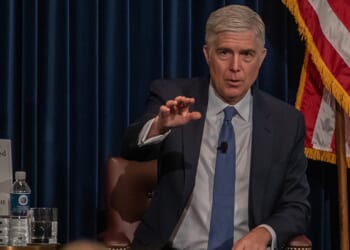The U.S. Space Force seeks to overhaul outdated nuclear tracking software into a modern, cloud-compatible system, calling on industry experts to modernize over three million lines of legacy code.
The United States Space Force, the sixth and newest branch of the U.S. military, issued a “sources-sought” notice earlier this month, seeking assistance to upgrade an aging nuclear weapons tracking system and prepare it for deployment to the cloud. The effort will require overhauling more than three million lines of software code in the Air Force Technical Applications Center (AFTAC) National Data Center (NDC) with a Geophysical Signal Exploration System (GeoSES), which will enable it to utilize cloud computing.
“The US NDC software baseline dates to the 1990s. It comprises over three million lines of code (logical SLOC), written in over a dozen programming languages (including: C, C++, csh, Fortran, Java, Python, Perl, Scheme, SQL),” the notice stated.
“The current architecture, characterized by its monolithic nature and tightly coupled components, presents significant challenges to maintainability. This legacy software, developed before the adoption of modern architectural and security practices, is incompatible with cloud-ready environments in its current form.”
The overhaul of the code at the NDC will allow the Space Force to adopt cloud computing to “enhance scalability, reliability, and cost-efficiency,” which can help it accomplish its primary mission of detecting “nuclear explosions anywhere on earth, the atmosphere, or in space.” AFTAC maintains a system of more than 3,600 sensors as part of a global network.
The U.S. Space Force will hold industry days in the coming months and has encouraged interested companies of all sizes to attend.
What Is the Mission of the Space Force?
Questions have been asked, exactly what U.S. Space Force’s role is, and this sources-sought notice may help provide a clearer picture.
“On paper, the USSF is dedicated to defending U.S. interests in space. More specifically, the USSF is charged with protecting space assets—satellites, mostly—ensuring freedom of operation, monitoring space debris, and developing technologies for space warfare,” wrote Harrison Kass for The National Interest earlier this year.
The NDC is crucial to enabling the USSF to do its job.
Wanted: Code Writers to Update the Old Nuclear Weapons Tracking Systems!
The current nuclear tracking system dates to the 1990s and is therefore incompatible with the cloud. The federal government is already known to operate a myriad of computer networks of which some are barely compatible with others. The question is why the U.S. Space Force will call upon industry to upgrade the code rather than completely rebuilding the software from scratch.
“Overhauling that code in order to make it ’cloud-ready’ could involve a number of different tech challenges, some of which compete with one another,” said Dr. Jim Purtilo, associate professor of computer science at the University of Maryland.
“There will be some translation involved, potentially converting old code written in one programming language to a newer language more suited to cloud execution. But even without such translation, there will be a huge number of decisions about what runs where,” Purtilo told The National Interest.
“That system conversion is very complex, but not as complex as just starting from scratch. Someone starting with a blank slate would need to reconstruct the requirements of that system before deciding how to render them in a cloud-based environment,” Purtilo continued.
“If the system has been in use for a long time without a lot of upkeep on the documentation, then probably important nuances captured by the old program are forgotten, and developers would have to rediscover them from scratch along the way. That is error-prone and expensive.”
Having the Nuclear Weapons Tracking System on the Cloud Could Be Risky
It also isn’t entirely clear why the Space Force is opting to move such a sensitive system to the cloud, given the security threats it could present.
“Conceptually we would like to think it all lives in the cloud like that is some magical place, but in fact the conversion will demand many decisions about what tasks will run where, how the data will be represented and—most important of all—how original data to be processed will get from where it is created (out in the field) to where it will be processed,” explained Purtilo.
“That might once have been easily accomplished on the same system, but once the tasks are separated, the conceptually simple operation of moving data begs handling of many more conditions that might arise during transmission. There is no one-to-one source program translation to make this happen.”
Dr. Purtilo also suggested that other technologies could be employed to streamline the process.
“Potentially a promising approach would be to use AI tools to analyze the old code base, reconstruct details about what was intended, then use that information to trigger the generation of new programs to implement those intentions in the new run-time environment,” he concluded.
“But that is not a small undertaking either.”
The Space Force will continue to protect the domain of space while watching the skies for foreign threats. It will soon do so from the cloud.
About the Author: Peter Suciu
Peter Suciu has contributed over 3,200 published pieces to more than four dozen magazines and websites over a thirty-year career in journalism. He regularly writes about military hardware, firearms history, cybersecurity, politics, and international affairs. Peter is also a Contributing Writer for Forbes and Clearance Jobs. He is based in Michigan. You can follow him on Twitter: @PeterSuciu. You can email the author: [email protected].
Image Credit: Shutterstock/ Danny Ye.
















